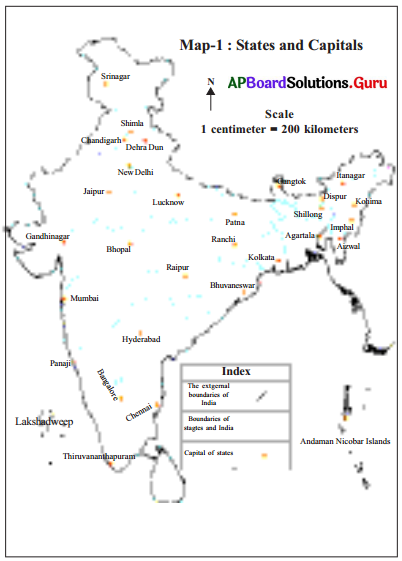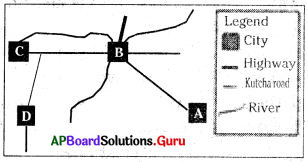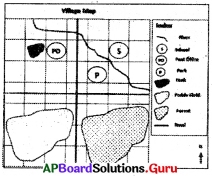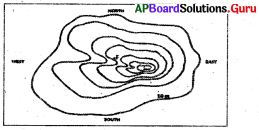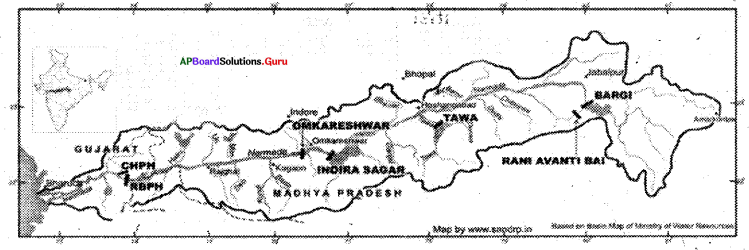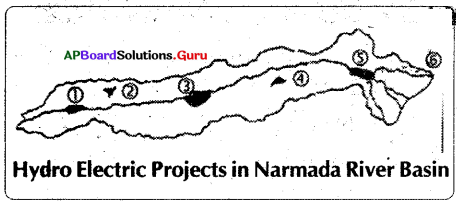Practice the AP 7th Class Social Bits with Answers Chapter 7 Handicrafts and Handlooms on a regular basis so that you can attempt exams with utmost confidence.
AP State Syllabus 7th Class Social Bits 7th Lesson Handicrafts and Handlooms with Answers
Choose the correct answer.
Question 1.
Shankavaram village is in ………….. district.
A) Guntur
B) Krishna
C) Ananthapur
D) Prakasam
Answer:
D) Prakasam
Question 2.
………….. is craftwork that involves the use of wild date palm leaves.
A) Basket making
B) Handloom weaving
C) Pots making
D) Chairs making
Answer:
A) Basket making
![]()
Question 3.
…………… sarees are world-famous.
A) Dharmavaram silk
B) Gadwal
C) Mangalagiri
D) Guntur
Answer:
A) Dharmavaram silk
Question 4.
Silk sarees are manufactured by following different tasks like dyeing of ……………
A) Panni
B) Katcha Pattu
C) Spendiling of yarn
D) Both B & C
Answer:
D) Both B & C
Question 5.
They get …………. per saree for the work.
A) Rs. 1300
B) Rs. 1100
C) Rs. 1000
D) Rs. 9000
Answer:
A) Rs. 1300
![]()
Question 6.
………… has the second largest number of handlooms in the country.
A) Assam
B) Delhi
C) Goa
D) Andhra Pradesh
Answer:
D) Andhra Pradesh
Question 7.
Venkatesu’s son Nagendra was engaged in weaving in the ……….. set up inside the house.
A) Chitkasu
B) Maggam
C) Panni
D) Acchu
Answer:
B) Maggam
Question 8.
Polaiah belongs to …………. tribal community.
A) Chenchu
B) Yanadi
C) Yerukala
D) Konda reddys
Answer:
C) Yerukala
![]()
Question 9.
Silkworms grow on …………. tree.
A) Babul
B) Mulberry
C) Tamarind
D) Olive
Answer:
B) Mulberry
Question 10.
Dharmavaram is located in ……….. district.
A) Anantapur
B) Khammam
C) Kurnool
D) Chittoor
Answer:
A) Anantapur
Question 11.
The work of Polaiah in the lesson.
A) Mat weaver
B) Basket weaver
C) Maggam weaver
D) Blacksmith
Answer:
B) Basket weaver
![]()
Question 12.
The persons who supply raw material to the workers and they took produced clothes are called as
A) handloom worker
B) house owner
C) master weavers
D) co-operative credit societies
Answer:
C) master weavers
Question 13.
Basket weaving is
A) knowledge-based
B) thought based
C) craftwork
D) very difficult
Answer:
C) craftwork
Question 14.
The profession of the Yerukala tribe
A) saree weaving
B) fortune-telling/sodhi
C) both A & B
D) basket weaving
Answer:
D) basket weaving
![]()
Question 15.
The languages in Yerukula Bhasha.
A) Telugu
B) Tamil
C) Kannada
D) All the above
Answer:
D) All the above
Question 16.
The local name of silk yarn is
A) Coloured pattu
B) Katcha pattu
C) Yarn
D) None
Answer:
B) Katcha pattu
Question 17.
Yeruka tribe speak
A) Hindi
B) Gandhari
C) Yerukula Basha
D) None
Answer:
C) Yerukula Basha
Question 18.
Recently saree that get patent right in India.
A) Ikkat
B) Kanchi
C) Dharmavaram
D) Mangalagiri
Answer:
C) Dharmavaram
![]()
Question 19.
Some of the merchants from ……… sale zari to the weavers of Dharmavaram.
A) Surat
B) Gujarat
C) Ahmed Nagar
D) Kolkata
Answer:
A) Surat
Question 20.
……….., …………. and ………… were used in process of weaving a saree
A) warp, wept, zari
B) wound on a bobbin
C) weaving
D) dyeing
Answer:
A) warp, wept, zari
Question 21.
………… is the yarn that goes from top to bottom and ………… is the yarn that go from left to right.
A) warp, weft
B) weft, warp
C) Maggam dying
D) None
Answer:
A) warp, weft
![]()
Question 22.
A saree requires approximately ……… to …….. days to complete.
A) 7 – 10
B) 4 – 8
C) 5 – 6
D) 6 – 7
Answer:
B) 4 – 8
Question 23.
The whole family has to work for 12-15 hours a day for nearly ………. days to weave 10 sarees.
A) 20-30
B) 30-40
C) 40-50
D) 50-60
Answer:
C) 40-50
Question 24.
The government should take this step to solve the problems of handloom workers.
A) encouraging capitalists
B) encouraging co-operative societies
C) encouraging factories
D) encouraging middlemen
Answer:
C) encouraging factories
![]()
Question 25.
……….. meters of long warp which can make 10 sarees at a time.
A) 80
B) 75
C) 90
D) 100
Answer:
B) 75
Question 26.
………. card is used for designing sarees.
A) state
B) board
C) playing
D) Jacquard
Answer:
D) Jacquard
Question 27.
Making the raw silk for warp and weft is known as
A) Maggam
B) Sappuri
C) Andugula
D) Kanchi
Answer:
B) Sappuri
Question 28.
……….. is a craftwork that involves the use of wild date palm leaves.
A) Post making
B) Handloom weaving
C) Basket making
D) Chairs making
Answer:
C) Basket making
![]()
Question 29.
What does the picture show?
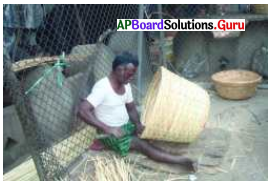
A) Basket weaving
B) Weft making
C) Dyeing
D) Warp making
Answer:
A) Basket weaving
Question 30.
What does the picture show?
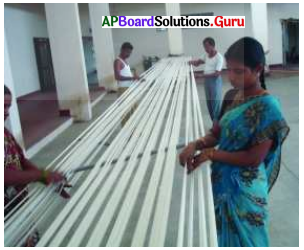
A) Warp making
B) Pitloom
C) Weaving
D) Dyeing
Answer:
A) Warp making
Question 31.
Uppada: East Godavari:: Ponduru: ………….
A) Neilore
B) Guntur
C) Srikakulam
D) Kalahasti
Answer:
C) Srikakulam
32. Find the correct statement.
1) Konaseema is famous for toys.
2) Machilipatnam is famous for Kalamkari.
A) 1 only
B) 2 only
C) Both 1 & 2
D) None
Answer:
B) 2 only
![]()
Question 33.
Match the following :
A B
1. Musical instruments [ ] A) Vetapalem
2. Agarbathis [ ] B) Srikalahasti
3. Bangles [ ] C) Pithapuram
A) 1 – B, 2 – C, 3 – A
B) 1 – C, 2 – B, 3 – A
C) 1 – C, 2 – A, 3 – B
D) 1 – A, 2 – B, 3 – C
Answer:
C) 1 – C, 2 – A, 3 – B
Question 34.
The basket maker’s family migrated from Shankavaram to Ongole. The reason is
A) He wants to leave his basket making profession
B) The demand for baskets had declined in native place
C) The raw material is cheaper than in his village
D) All the above
Answer:
B) The demand for baskets had declined in native place
Question 35.
Which of the following is a result of introducing Power looms and power mills in the textile industry?
A) Employment of weavers in handloom industry increased
B) Income of handloom weavers increased
C) Handloom industry declined
D) Production of Handloom sarees increased.
Answer:
C) Handloom industry declined
![]()
Question 36.
This Region is famous for the handloom industry in Andhra Pradesh
A) Dharmavaram
B) Vijayawada
C) Visakhapatnam
D) Tirupati
Answer:
A) Dharmavaram
Question 37.
In handlooms Andhra Pradesh stands in the place of
A) Second
B) Third
C) Fourth
D) Fifth
Answer:
A) Second
Question 38.
In handlooms, Jacquard Cards are used for
A) Reeling
B) Twisting
C) Designing
D) Dyeing
Answer:
C) Designing
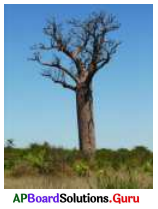
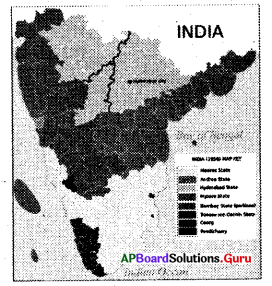
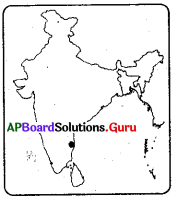
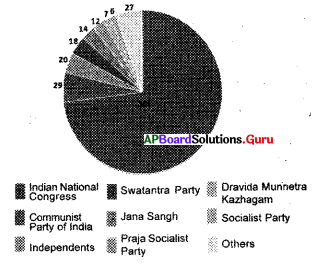

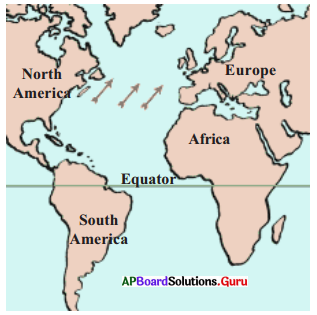
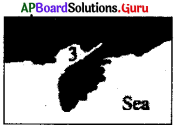
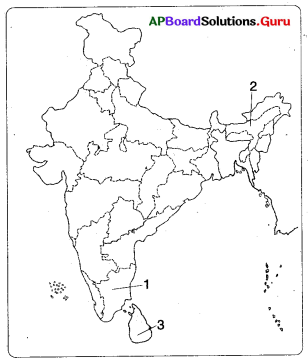

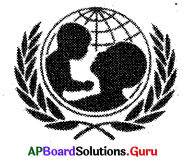
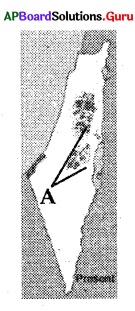
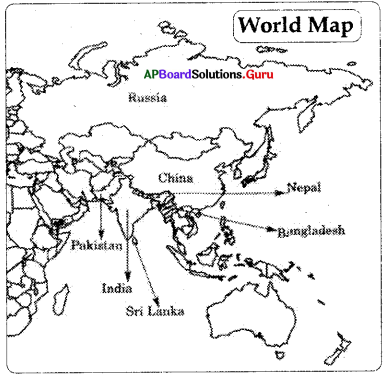
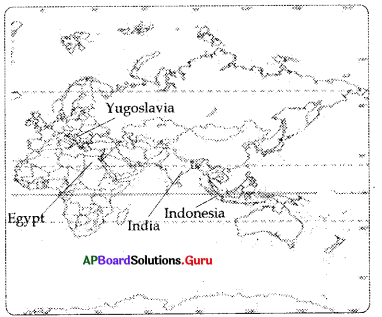
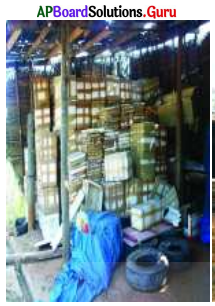
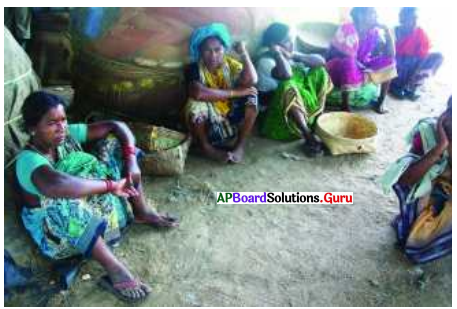
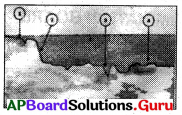
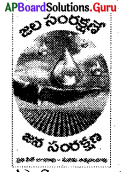
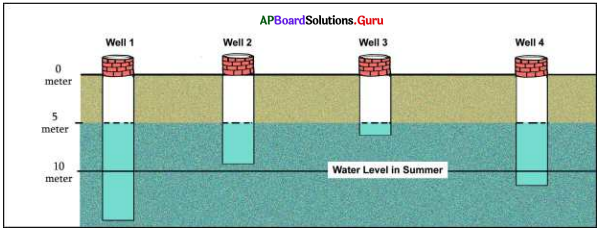
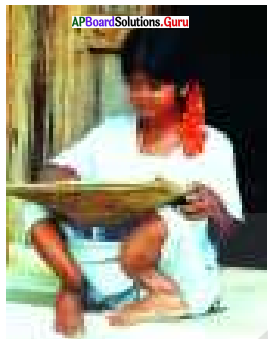




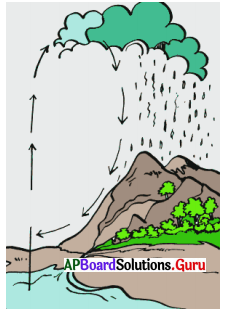
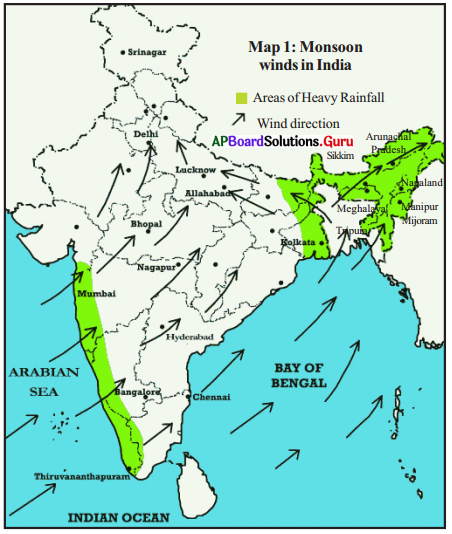
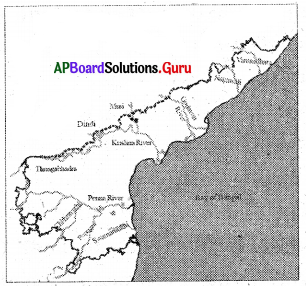
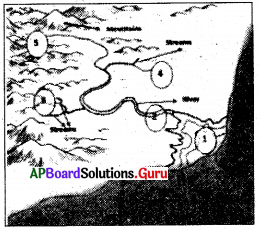
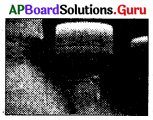

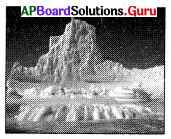
 This is the symbol of
This is the symbol of This is the symbol of
This is the symbol of